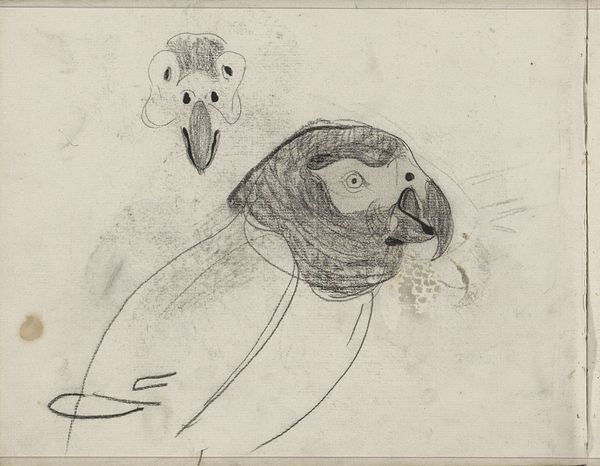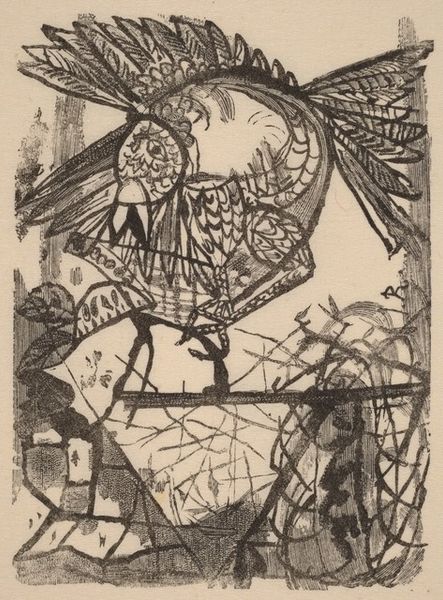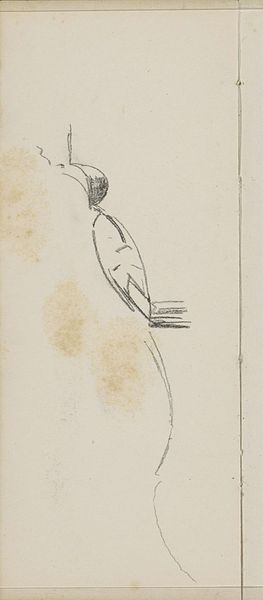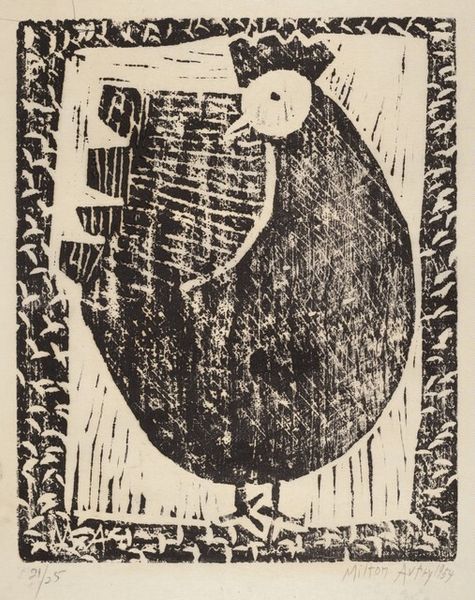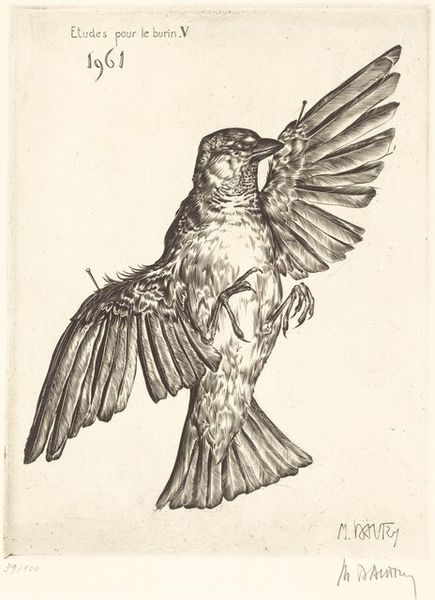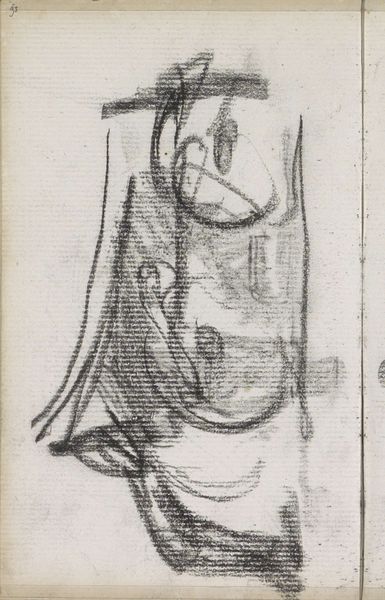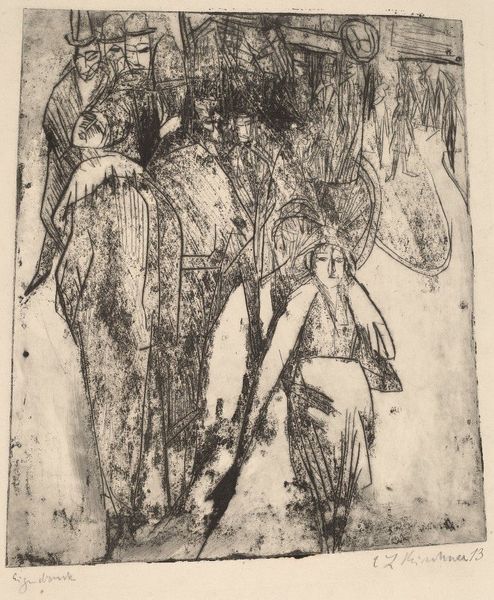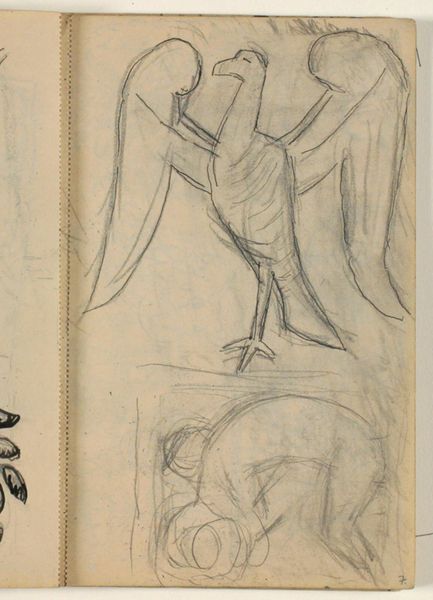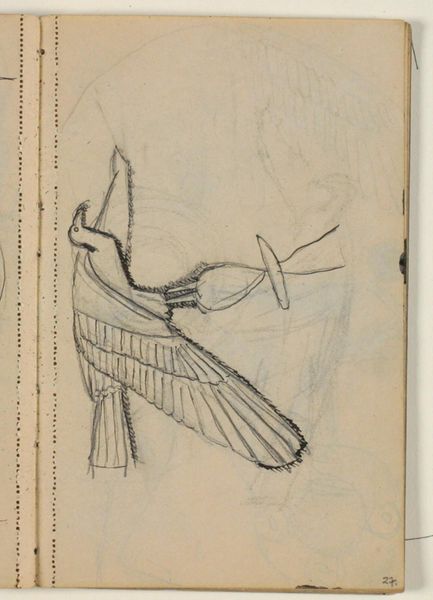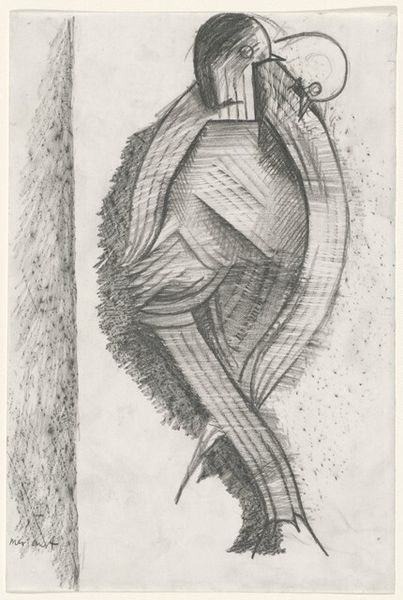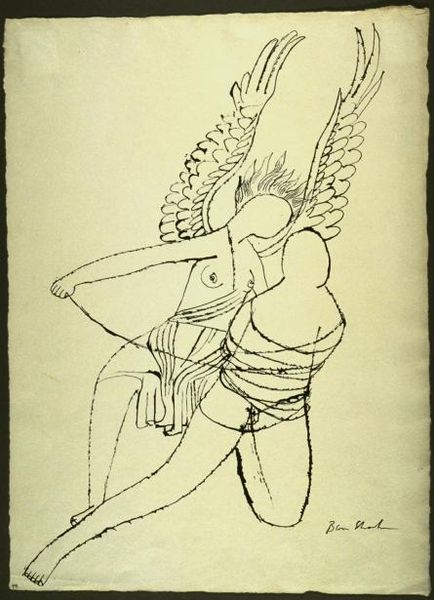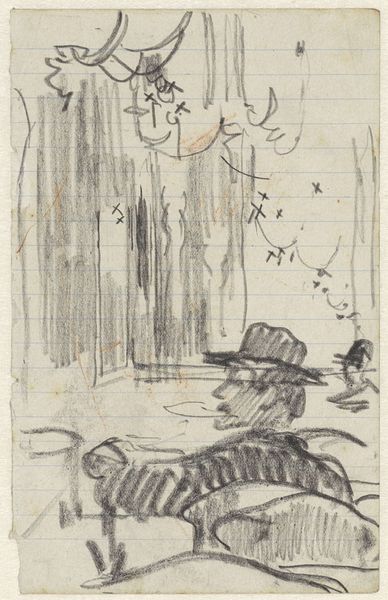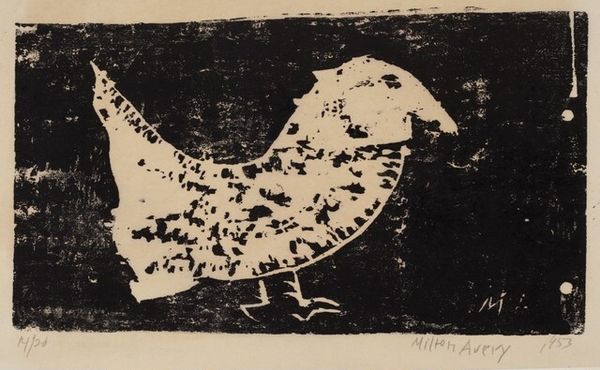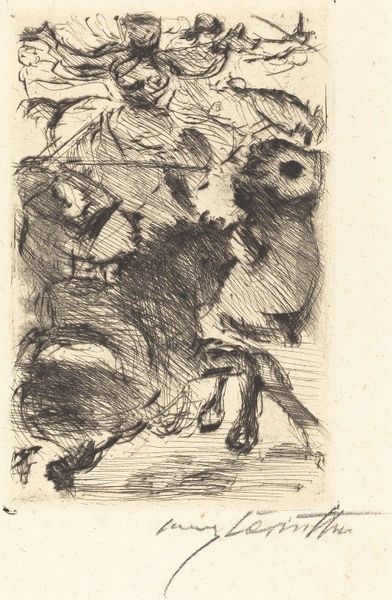
drawing, ink
#
portrait
#
drawing
#
cubism
#
bird
#
figuration
#
ink
#
sketch
#
abstraction
#
watercolour illustration
Dimensions: 144 x 118 cm
Copyright: Pablo Picasso,Fair Use
Editor: We’re looking at Picasso’s 1938 drawing "A Rooster," created with ink. It's rendered in this sepia tone that makes it look almost ghostly. What cultural weight does an image of a rooster carry? Curator: The rooster, from ancient times, has been associated with vigilance, courage, and resurrection. As a solar symbol, it announces the dawn, dispelling darkness. What strikes you about Picasso’s specific rendition? Editor: The way he fractures the form, it's very Cubist. It feels both aggressive and vulnerable, almost as if the rooster is disassembled and put back together. Why choose a rooster during such a turbulent period? Curator: Consider the political climate of 1938; the Spanish Civil War was raging, and Europe was on the brink of World War II. The rooster, a symbol of national pride in many cultures, could be seen here as a defiant assertion of spirit amidst impending chaos. Is it being resurrected or destroyed? Editor: That’s a fascinating tension – defiance in the face of something awful. Curator: Exactly! Notice how Picasso uses the Cubist fragmentation not just to deconstruct the image but perhaps to convey a fractured sense of identity and resilience in a world being torn apart. The symbolism of this drawing feels incredibly timely for the period. Does knowing this change your perspective? Editor: It does! It’s not just an image of a rooster; it’s about the spirit of the times. I am viewing this familiar animal with completely fresh eyes! Curator: Precisely. Sometimes, the simplest images can be loaded with cultural memory and profound meaning, especially in times of upheaval.
Comments
No comments
Be the first to comment and join the conversation on the ultimate creative platform.
